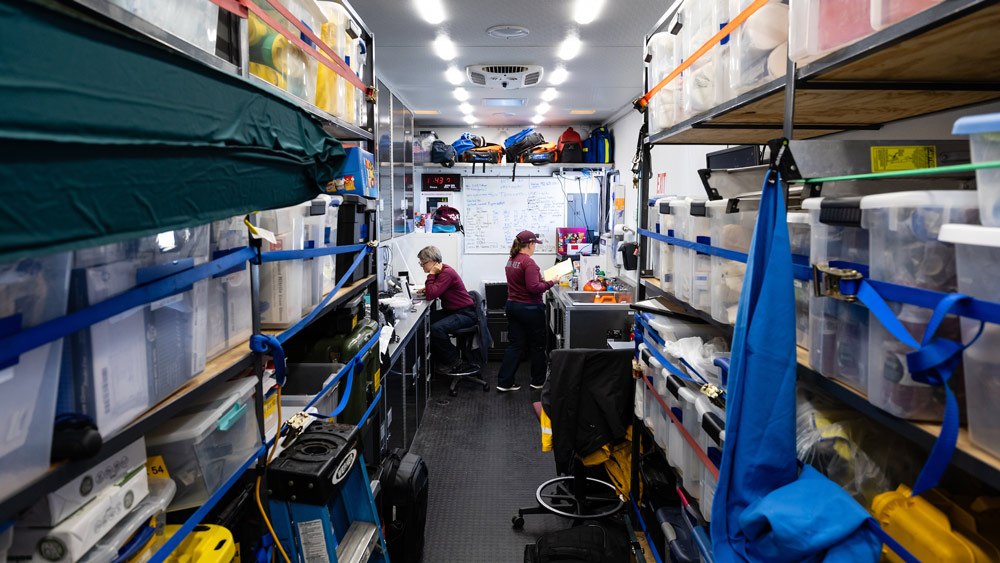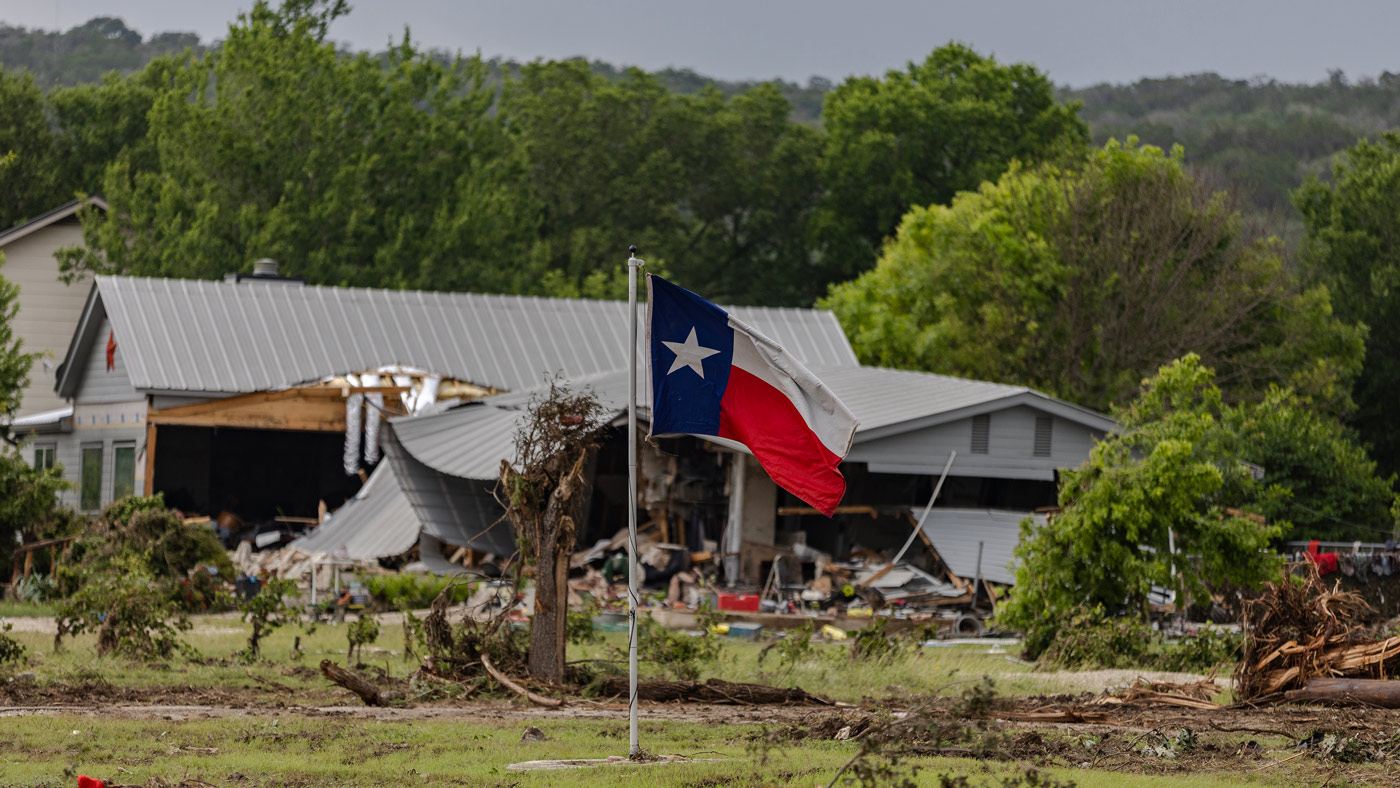Texas is characterized by its people, their resilience, a community-centric mindset and the fortitude to keep going.
As the state’s first public institution of higher education, our designation as a land-grant university holds a promise that Texas A&M University exists to serve Texans. This mission extends beyond educating to research and service. For nearly 150 years, the university has put expertise on the ground when it’s needed most. To help rebuild lives and livelihoods. To support communities in times of hardship in every way we can.
Over the July 4, 2025, holiday weekend, flash floods tore through the Texas Hill Country, devastating numerous counties and communities in their wake. Texas A&M stands alongside our agency partners within The Texas A&M University System, fellow Aggies, first responders and countless volunteers as response efforts continue.

As part of its ongoing efforts to keep search and rescue dogs healthy, safe and mission-ready, the Texas A&M Veterinary Emergency Team (VET) deployed to Kerr County in support of Texas A&M Task Force 1, Texas Task Force 2 and other regional partners.
From specialized care and response teams offering “boots on the ground” support, to fundraising activities that provide financial assistance, to experts working to provide clarity on topics related to natural disasters, members of the Aggie community are doing exactly what we are called to do: serve others.
Learn more about these contributions.
The team will provide care for canine search teams aiding rescue efforts, ensuring their health and readiness amid challenging conditions.
Sampling for bacteria, E. coli was made available on July 9-10 in Burnet, Lampasas, Llano and San Saba counties in the Texas Hill Country.
Teams from several A&M System agencies have been deeply engaged in response operations, from search and rescue to infrastructure support.
In the News
Rain occurs when you have a really moist parcel of air at the surface and it rises in the atmosphere and it cools off … think of a sponge full of water and you start squeezing, wringing out the sponge and the water falls out,” Andrew Dessler, a climate scientist at Texas A&M University, said. “In a warmer atmosphere, there’s more water in the sponge, so when you wring it out, you get more water falling.”
Ali Mostafavi, a civil engineering professor at Texas A&M University, said the disaster showed how efforts to prepare for floods failed to keep pace with the risk in a region that he described as “one of the deadliest flash flood alleys in the nation.” Local warning systems “might have been adequate in the past,” Mostafavi said. “But for the new norm, they are not adequate.”
How can the next disaster in flash flood alley be prevented?
Nasir Gharaibeh, professor of civil and environmental engineering at Texas A&M University, studies flash floods, and he said the key word is “flash.” These things happen really fast. “We are finding that flash flooding is really the most lethal type of flooding. Generally speaking, nationwide, about 70% of fatalities in flood events happen in flash flood events,” he said. “About 40% of flash-flood events that happened in Texas happened in this region.”
FACT FOCUS: No, weather modification did not cause the deadly flash floods in Texas
“The claim that cloud seeding played a role in this tragic event is complete nonsense,” said Andrew Dessler, director of Texas A&M University’s Texas Center for Extreme Weather.
Students from the Texas A&M Student Bonfire Association are on the ground helping to clear search areas. While most of the crew are strangers in Maroon, students say their support is something the community won’t forget. “It means a lot for the people out here… It’s heartwarming. It’s wholesome. It shows that, you know, we’re all in this together.”
Preparing for Emergencies
When disaster strikes, preparation is your strongest defense.
Just like people are encouraged to have emergency plans for themselves, veterinarians remind us that our pets need them, too.
Information from the Texas A&M AgriLife Extension Service for National Preparedness.
A machine learning algorithm developed by Texas A&M researchers could quickly identify life-threatening situations through social media posts.

